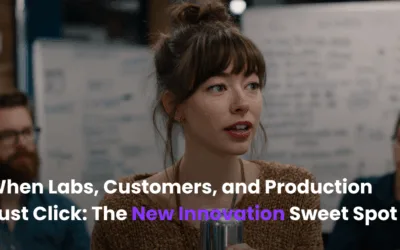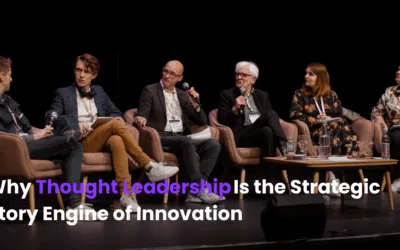Change resistance isn’t irrational; it’s human. When people push back against innovation efforts, it’s not generally because they want the business to fail. It’s because change introduces ambiguity. It challenges routines, reshapes power and puts people’s competence under a spotlight. So any act of resistance is rarely about the change itself, and instead is about the story people tell themselves about what the change means for them.
Innovation, by its nature, disrupts the status quo. It asks people to give up familiar methods in exchange for something that might conceptually be more effective, but might also show up where there are bottlenecks in operation. And where those bottlenecks turn out to be less productive workers, it will inevitably cast a shadow over their employment prospects.
In his research, Shaul Oreg (2003) noted that resistance to change is most pronounced when individuals perceive a threat to their sense of control, routine or competence. So when organisations push new initiatives without acknowledging the underlying human dynamics, they create more friction. And when leaders interpret that friction as defiance or negativity, they respond with more pressure, which only deepens the divide.
 Overcoming resistance to innovation
Overcoming resistance to innovation
Innovation forces people to let go of deeply held assumptions about how work should be done. That can feel like an attack on their identity. So when someone says, “We’ve tried this before and it didn’t work,” it’s not just a complaint, but rather a form of self-protection. To overcome this, you need to find ways to turn the process of innovation into an opportunity for personal development and productivity. The very act of innovation needs to be framed in a manner that will engage workers in solving the problem of how by improving an individual’s productivity they are actually improving their value in the firm. This may involve reframing the work they have previously done as expertise. That is, transforming that history of work as a library of effort that can be brought to any new way of working or new tools, and used to improve outputs. This way, their past efforts are not discarded, but rather embedded in the innovation process and outputs.
John Kotter (1996) made the case that most transformation efforts fail not because of bad ideas, but because of failure to manage the human side of change. And McKinsey (2023) echoes this, noting that sustainable transformation only occurs when organisations create engagement, build belief and allow space for adaptation. This is why it’s so important to find ways of bringing your employees on the journey of innovation change, and not position it as a threat.
Three strategies for overcoming resistance
1. Make change meaningful
People need to understand the why, not just the what. Innovation efforts need to be linked not just to KPIs or shareholder value, but rather to the values and purpose of the organisation. As McKinsey (2023) has noted, employees are more than three times more likely to support change if they believe it’s meaningful. And leaders who connect innovation to a shared mission make it easier for teams to find personal relevance in the change.
2. Involve people early
Inclusion lowers resistance. When people have a say in how change unfolds, they’re more likely to support it. Too often, innovation is designed in isolated teams and then rolled out with impersonal, even deeply dehumanising instructions that breed resentment. In contrast, involving teams in co-design or early testing shifts the dynamic from passive recipient to active contributor. Immunity to change isn’t just psychological, it’s systemic (Kegan and Lahey 2009). And systems shift faster when people inside them feel a sense of agency.
3. Lower the threat level
Change often triggers loss aversion, in that people focus more on what they might lose than what they could gain from innovation. Leaders can ease this by reducing the perceived threat. Communicate with empathy, be honest about what will change, and also what won’t. Reinforcing people’s value as well as highlighting continuity will make clear that the skills and contributions that mattered before are still recognised, and you’ll make it easier for people to engage without fear of losing their jobs.
Summing it up
Resistance to change isn’t a failure of attitude. It’s a predictable response to disrupted systems, habits and identities. Leaders who understand this will be better placed to frame innovation as something that can add value to every employee’s work, and they can build a sense of excitement around innovation rather than an impending sense of loss.
It’s important to remember that when resistance is met with respect, it loses its power. And that’s when innovation stops being something people brace against, and becomes something they lean into.
References
Kegan, R., & Lahey, L. L. (2009). Immunity to change: How to overcome it and unlock the potential in yourself and your organization. Harvard Business Press.
Kotter, J. P. (1996). Leading change. Harvard Business Review Press.
McKinsey & Company. (2023). Rewired: The McKinsey guide to outcompeting in the age of digital and AI. https://www.mckinsey.com/business-functions/mckinsey-digital/our-insights/rewired-the-mckinsey-guide-to-outcompeting-in-the-age-of-digital-and-ai
Oreg, S. (2003). Resistance to change: Developing an individual differences measure. Journal of Applied Psychology, 88(4), 680–693. https://doi.org/10.1037/0021-9010.88.4.680



